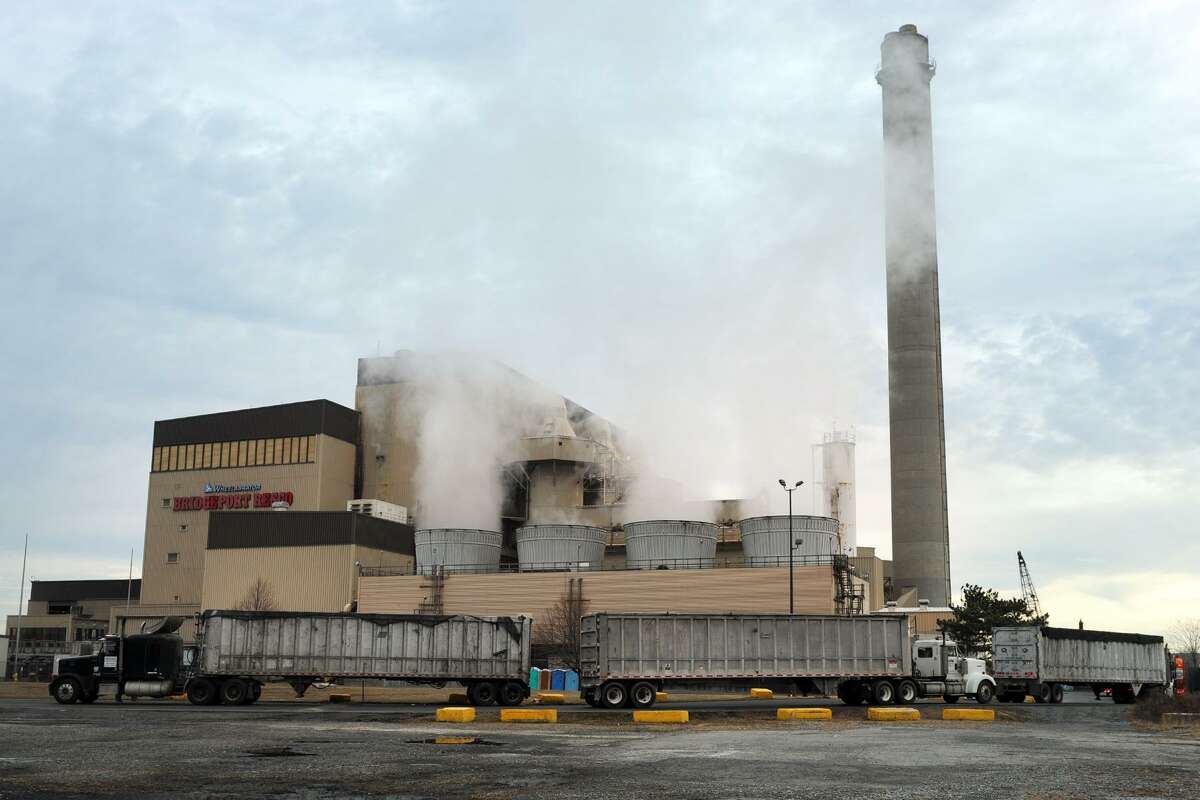NEWS
Where does all our trash go?

In the past few months, we’ve heard a lot of misinformation, and questions, and frustration around waste and recycling so let’s talk TRASH! To start, we’ll share a brief overview of regional “trash-landscape” and in future blogs, we’ll dive into local processes and overall recycling.
Have you ever wondered, as you observed the smoke billowing out of the striped stacks on the drive through Bridgeport on the south side of I-95, “What are they burning over there”? It’s our trash! What you are looking at is Wheelabrator Bridgeport, a waste-to-energy facility that is the recipient of all of Westport’s “post-recycled trash” (more on that term in months to come).
In the mid 1980s, as landfills around Connecticut began to exceed their capacity, the State of Connecticut started an initiative to close the landfills and divert the waste to newly built or converted incinerator facilities. These “waste- to- energy” plants use the same basic process as fossil fuel plants with one critical difference: instead of burning oil or coal they burn your trash! The heat produced from combustion creates steam that is pushed through a turbine to turn a generator and produce electricity. Recent technology improvements have reduced air pollutants, making incinerator facilities substantially cleaner than their predecessors.
There are currently five operating waste to energy plants in Connecticut, the largest of which is in Hartford (“MIRA”). This plant is publicly owned and operated, and accounts for processing 35% of the state’s waste. In Southwestern CT, the waste to energy plant known as “Wheelabrator” processes about 28% of the states waste and is privately owned and operated by WINWASTE INNOVATIONS, a partnership of Wheelabrator, Tunnel Hill Partners (an integrated waste to rail company), and City Carting. Both of these plants have been in operation since 1989. Critically, MIRA is slated to close permanently THIS summer after facing significant economic challenges including the need for capital improvements as well as increasing operations and management costs. This impending closure will force the remaining four plants to absorb the burden of additional waste or it will be shipped out of state, neither of which is an ideal solution.
Advantages of the waste to energy process are that it reduces the total volume of “post-recycled” waste by approximately 90% (the majority of what remains for landfill is ash). Alternately, waste would be shipped by truck out of Connecticut to locations in Ohio, upstate New York, and Pennsylvania at significant cost to taxpayers, with increased use of fossil fuels and production of CO2. The sorting process at these plants also removes and recycles tons of metal each year that would otherwise be buried in landfill. At Wheelebrator alone, enough electricity is produced annually to power approximately 60,000 homes (57MW) which is the equivalent of 968,567 barrels of oil or 291,491 tons of coal saved in “clean energy”.
Opponents of burn to energy plants cite that significant amounts of CO2 are still produced (waste incinerators are amongst the top greenhouse gas emitters in Connecticut), and more importantly, the plants are frequently associated with high levels of air pollution and increased incidence of pulmonary illnesses amongst neighbors. Furthermore, 3 of the 5 waste incinerators in the state are located in environmental justice communities – neighborhoods that are disproportionately burdened by multiple sources of pollution and socio-economic vulnerabilities. Other arguments against waste-to-energy facilities cite concerns that burn plants may de-incentivize recycling in general, but particularly in the destruction of valuable materials including minerals, woods, and plastics. Finally, it is important to remember that burn plants still create ash and that product itself has to be landfilled (most of the ash produced in Connecticut is discharged in the Town of Putnam, CT).
Connecticut produces 2.4 million tons of waste per year, an average of 1600 pounds per person per year (consistent with the national average). Of that total, waste to energy facilities in Connecticut process 1.4 million tons of our solid waste. The rest (almost 1 million tons) is shipped out of state for deposit in landfill. With the impending closure of the MIRA plant in Hartford and subsequent strain that will place on Wheelebrator, and continually increasing waste due to lack of composting and proper recycling, Connecticut finds itself in a “waste crisis.”
So what can you do?? REDUCE, REUSE, RECYCLE and DIVERT FOOD WASTE/ROT.
Remember learning that adage in school? It really can be that simple! Be thoughtful in your purchasing and favor reusable over disposable (even if it requires a bit more money or personal energy). Repair broken items instead of tossing them away. And the great news is that Westport has a number of programs currently in place to assist and support your efforts to reduce overall waste:
- Separate your glass from other recycling and deposit at the transfer station
- Redeem your cans and bottles at participating facilities
- Join the Zero Food Waste Challenge
- Learn about all the other items that can be individually recycled and where!